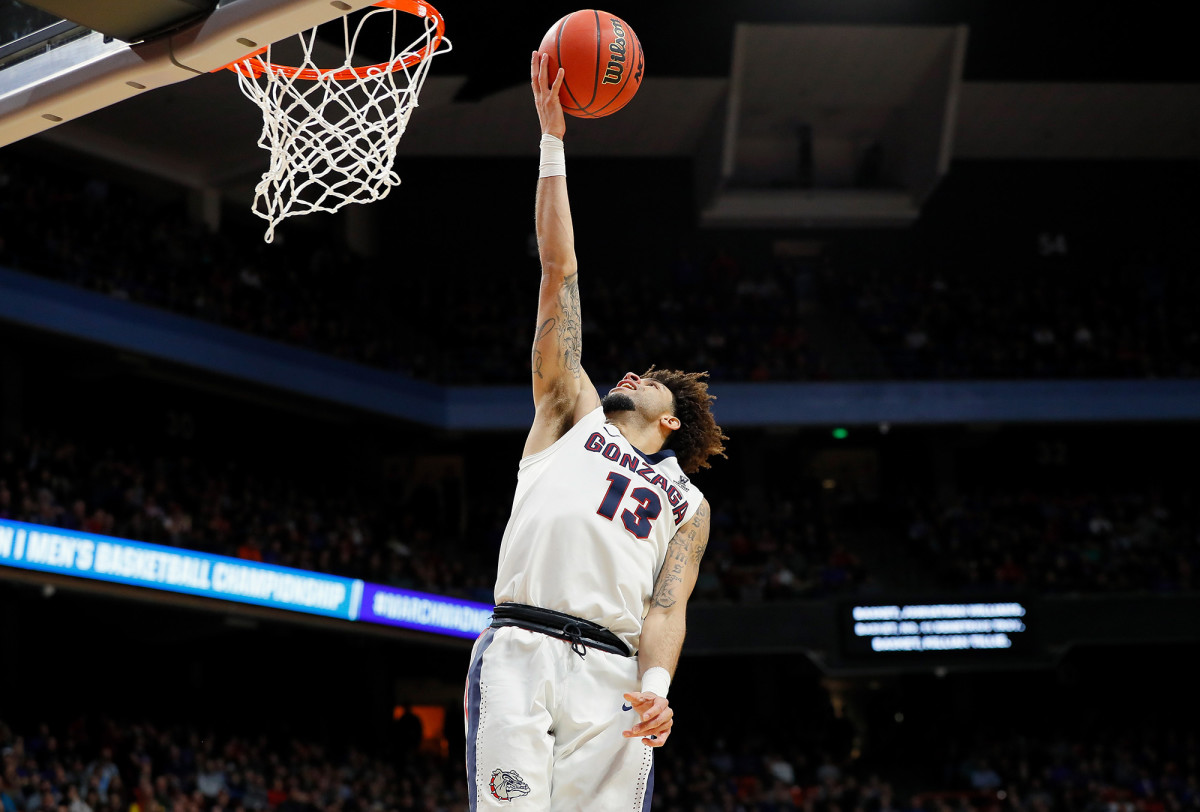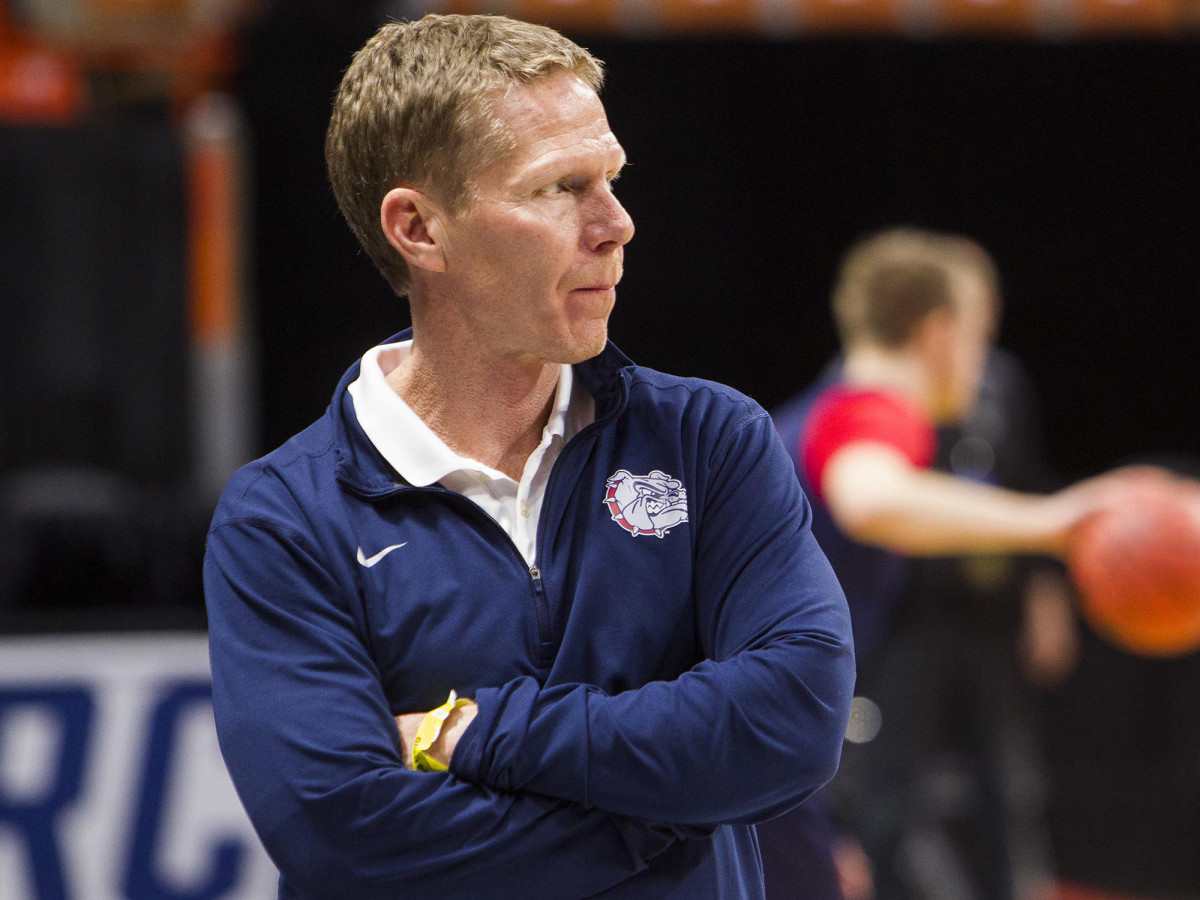How Gonzaga Got Flexible to Build Itself Into a Unique Contender

BOISE — After losing in the national championship game last season, before the start of another year, the Gonzaga basketball team decamped last fall to a lake near their campus in eastern Washington. They spent two days there, only this wasn’t a typical team-building retreat. This trip had some of those elements—a Texas Hold ‘Em tournament, a ziplining excursion, intense games of pickleball—but it also contained an underlying theme that was decidedly more modern: mindfulness.
“We’re trying to get them to understand: How do you problem-solve?” says Travis Knight, the team’s strength and conditioning coach and the event’s organizer. “We don’t want them to be soldiers on the court, just following commands. We want them thinking more like special forces, generating their own collective energy and confidence.”
Which is how the Zags found themselves divided into teams, locked into rooms, needing to figure out codes by doing puzzles in order to escape. For senior guard Silas Melson, the exercise felt like it lasted longer than it actually did. Minutes passed like hours. But even though his “team” finished last, he thought back to the room that he escaped from on Thursday, when Gonzaga played UNC-Greensboro to open its 20th straight NCAA tournament appearance. Not only did the Zags tip earlier than usual, in the late morning, but UNCG played an awkward style, pressing and slowing the tempo. Gonzaga had to adjust. But for the Bulldogs, this simply marked another room from which they had to work together to break out of, as they advanced to face Ohio State on Saturday in the Round of 32 in the West Region.
“At the end of the day, it’s still basketball,” Melson says. “But things like mindfulness, the escape room, those are an extra step that other people may not take that we do.”
Watch out, Tom Brady. Soon enough, the TB12 Method may be replaced by a new program called the GB15 Process—as in the Gonzaga Bulldogs and their 15 players. It’s not that Gonzaga does any one thing in its regimen that’s completely new to college basketball training. It’s that the Zags take what Knight describes as a “holistic-minded approach.” Imagine Bob Knight using that term to describe how he trained players at Indiana. Or Roy Williams.

The Bulldogs started down this training path roughly five years ago. They do yoga twice a week as a team with an instructor who was a pole vaulter in college. They study their players’ sleep patterns, their DNA and their diets. They know that one player responds well to an uptick in carbohydrates, while another needs to consume more saturated fats. And, in addition to the obvious stuff like basketball practice and weight training, they also swim and work on flexibility, agility and functional movement. It’s college basketball in the new age.
Knight pulls together his program from a variety of sources, including the best player in program history, John Stockton. The NBA Hall of Famer retired in 2003, long before mindfulness and an avocado ice cream ethos ricocheted throughout sports. But Stockton was TB12 before TB12, Knight says, combining unusual lower-body strength for a man his size with workouts that focused on balance, coordination and anticipation. Knight won’t say exactly what types of drills Stockton has taught him but did say “we’re teaching our players to anticipate what their opponents will do and counter that with balance.”
The process has all sorts of lifelong implications for Gonzaga’s players. Melson, for instance, learned that he was lactose intolerant and reluctantly cut milk and cheese from his diet. Fellow guard Zach Norvell Jr. found out he needed to sleep two hours longer each night—no easy task for a college student—and lose 11 pounds, which he did by spending a month as a pescatarian. “I felt better instantly,” he says. It’s worth noting that a slimmer, more mindful Norvell knocked down the key three-pointer against UNCG with 20.8 seconds left. He had been trained, he says, to handle that exact situation. Another escape room, as it were.

Knight says not many players grumble about the team’s approach, because Few—Few-y, as he endearingly calls him—takes part in yoga sessions and mindfulness retreats. It was Few who first worked with the former pole vaulter, Jordan Roskelley, whose own career (at Oregon) ended after she suffered from stress fractures in her shins and bulging disks in her back. He found her training so compelling that he asked her to work with his players—and then other teams at Gonzaga—to reduce both their stress levels and injury rates, connecting, Knight says, body to breath through downward dog, cat and cobra poses.
Roskelley could be fairly described as a players’ coach (or yoga instructor). She helped save former center Przemek Karnowski’s career after he underwent back surgery on the final day of 2015. And she has helped other players with their nutrition, given mindfulness seminars and even lets star forward Johnathan Williams control the music during yoga sessions. (He says he favors a mix of G-rated hip-hop and R&B, while mixing in the occasional country song to appease Few.) And while Few took a shot earlier this week at Williams’s yoga skills—“J-3 is not the most flexible guy. It’s good not to be last in class”—Williams, Gonzaga’s best defender and a force inside, says “yoga has been a big part of my growth.”
Knight says the team’s holistic approach to basketball preparation stems in part from how he believes modern coaches must relate to players in order to best reach them. “In this generation,” Knight says, “kids don’t have as much autonomy as we had growing up. Where you’re playing outside and mom doesn’t know where you are and you’re just kind of figuring it out. We have to create those opportunities for them, so they feel less like a commodity and they’re thinking on a higher level.”
That’s how Gonzaga overcame the devastating loss to North Carolina in last season’s national championship game and how the Zags shook off a rare three defeats this season before Christmas (although, to be fair, two of those came against teams ranked in the top 10). It’s also how Gonzaga competes with other college basketball powerhouses, who cycle in NBA talent, their best players leaving after one season. At Gonzaga, most of the players redshirt, even the stars. The current team has eight players that have redshirted, and that number is down from last year. For every year any one Bulldog is in the program, they’re more flexible, more healthy, better swimmers, better yogis, more mindful, all of it. “A rite of passage,” Knight calls it.
The Zags believe in their approach. Knight notes that the players rarely seem more tired at the end of the season than when it started. They don’t have dead legs, don’t show signs of burnout and even seem energetic throughout practice. As all sports move this way, the Bulldogs may also be establishing a holistic blueprint for future college hoops success.
“Everybody tries some of these things, but when push comes to shove and things get tough they fall back on what they trust and what they know and are comfortable with, which is probably more the traditional route,” Knight says. “We’ll try anything. Anything that works.”
